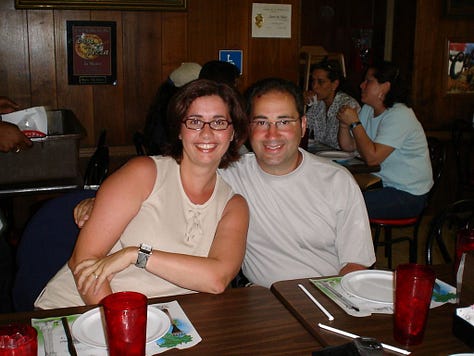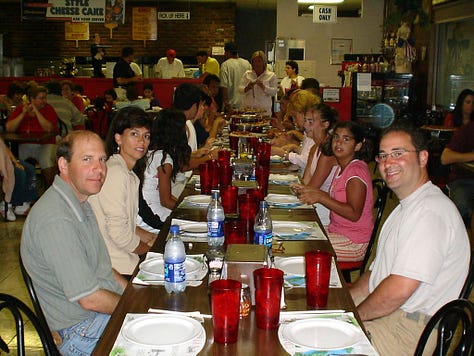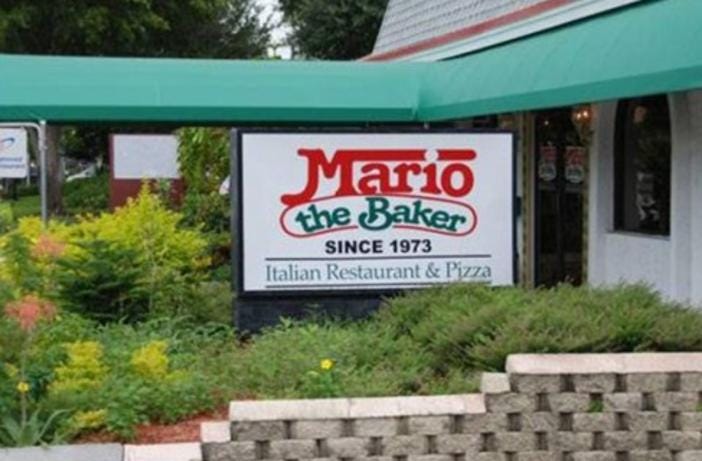As a freelance historian, I have decided to keep my newsletter subscriptions free in order to share my writing with whoever has an interest for the research and reflections in these posts. If you’ve been following along and have enjoyed my work, liking the posts by clicking the heart at the bottom of the page is easy way to support it. If you would like to support my work further, you can “buy me a coffee” or share Crivello with a friend! Thank you for following, commenting, sharing your stories, and even simply continuing to open these emails week after week.
It was summer in Hallandale, Florida, where we spent many vacations in a condo complex filled with Montreal Italians, children of the generation who purchased the apartments and their kids. We were a solid gang of 20-30 people, give or take. The “kids of the kids” - my generation - were tweens and teens, soaking up the sun for 2-3 weeks at a time, as we fell into our routines: breakfast, pack a lunch with snacks, collect towels and fight for the best beach chairs, trek through the scalding parking lot and across the street to the beach, where we would spend the day hanging out. In the late afternoon, we would chill a few hours at the pool before going up to shower and, sometimes, prepare ourselves for our dinner outing. And so it went every day.
During “peak weeks,” when everyone was there - all the Montreal families overtaking the condos (to the dismay of some of the retirees who permanently called the complex home) - we had plans almost every night. Piling into restaurants in southeast Florida, establishing our yearly haunts, and trying to convince staff to split the bills by family (we were unsuccessful time after time). It was overwhelming and sometimes too much, but we were damn lucky to have lived those summers together.
There were non-negotiables: Cheesecake Factory, Bulldog (while it lasted; they had a burger made with a Krispy Kreme doughnut bun and, yes, we tried it), Taverna Opa, Rustic Inn Crabhouse, a sushi place nearby, Cold Stone, and Mario the Baker.



As devoted Garlic Bread Girls 🧄, my sister and I could not resist ordering the garlic rolls on our first visit. When they arrived, they looked beautiful and unlike anything we had tried before. We were born and bred on sliced baguette, topped with slabs of garlic butter, and toasted in the oven to achieve the crunchiest crust, a perfect halo around the drenched crumb. Mario’s rolls were little balls of bread, slathered in oil, parmesan, and freshly chopped garlic. We couldn’t wait to dig in. But man, did our unsophisticated palates hate them.1 The garlic burned. I tried to wash it down with my iced tea, which also disappointed me because I didn’t realize it would be unsweetened. Cold tea and raw garlic - I was not enjoying myself so far.
Yet, year after year, we would return and reorder the rolls. We loved to hate them. As we would complain, yet again, our parents would ask why we continued to eat them. I really don’t know because, genuinely, the garlic was too much for me at that point in time. It’s like I was willing myself to eventually appreciate what I knew should taste good. I can only speak for myself, but all that training at Mario the Baker worked. I have definitely grown to:
adore and crave the garlic roll, or knot
accept that my breath will stink for days on end
induct the knots into my canon of iconic Italian-American cuisine that deserves celebration and acknowledgement
Digging Deeper
Like penne alla vodka and tortellini alla Gigi, the early history of garlic knots is hard to pin down. What we do know is that they were invented as a way to avoid wasting pizza dough scraps. The knots differ from regular rolls because they are twisted tightly before baking, giving them their identifying and typical shape. Usually, they are served with a marinara sauce for dipping.2 I love the combo, but I am also a sucker for dipping sauces. I will dip almost everything. Give me the Pizza Pizza dipping sauces and their offerings become slightly more edible. Others, like Alex Delany for bon appétit, argue: “If a garlic knot is a quality garlic knot, it doesn't need sauce.”3
A garlic knot doesn't try to hide what it is; it doesn’t pretend to be something else. It’s unapologetically bold, while remaining simple and true at heart. Even when out of sight, a garlic knot’s presence is still known via smell, communicating: “I am garlic and oil and dough and parsley, and that’s all I need to be. I am delicious.”
Alex Delany, “Perfection Exists, It's Called a Garlic Knot”
The origin stories span from the 1940s to the 1970s in New York City. Particularly, in pizzerias in Brooklyn or Queens. One Reddit post in the thread “today I learned,” explains: “TIL Garlic Knots were invented to prevent waste. In 1973, a Pizzeria in Queens, NY came up with the garlic knot as a way of not wasting leftover pizza dough scraps. They became an instant hit.” The link leads to the Wikipedia page, which doesn’t mention 1973, but 1940s Brooklyn as the founding place and time of their precursor, the garlic roll. Other articles point to a specific Brooklynite and his restaurant: Anthony Sette, owner of Anthony’s Place, has claimed that his pizzeria still makes the original 1943 first-ever-garlic-roll recipe with poppy seeds.4
Knots started to take centre-stage in the 80s, as reporters and food writers began to take notice of these popular NYC pizzeria snacks:
One of the earliest mentions of knots in print is from 1988, when Newsday reporter Marie Bianco wrote the article “Irresistible Garlic Knots” chronicling the twists’ history. One of the pizzaiolos she interviewed, Frank Zitoli, riffed on his uncle’s knot recipe and started selling them for 10 cents a piece out of his Plainview, New York, pizzeria in 1978. They became so popular, he told Bianco, “I hire part-time people who do nothing but peel garlic.”5
No, you won’t find garlic knots in Italy. Peccato for them, to be honest. But I treasure my trips stateside where I can find a local pizza joint serving these up fresh. Most recently, I had them in April 2023 from Mario's Pizza & Italian Homemade Cuisine. Too long ago. If you have a trusted garlic knot recipe, please send it my way. Otherwise, I’m looking forward to introducing this delicacy to my Italian boyfriend this summer. I’ve been hyping them up, so please also send your recommendations for the best knots in NYC!
This is becoming somewhat of a series within a series: the Sunday Stories diving into a particular dish from the Italian-American or Canadian tradition. I really enjoy writing these and I feel like they’re a lighthearted way to talk about sometimes heavy topics like family, heritage, and memory. And while I want to also get into the heaviness, these explorations are necessary, too. It’s no secret that I’m interested in the ways the North American Italian diaspora has presented and interpreted our culture (or cultures, if we’re looking beyond the national and into the regional). Sometimes, Italians look at our practices and say that we are “more traditional” than them (many of us still make tomato sauce, wine, cured meats from scratch). Other times, we are condemned as basterdizers, uncultured, and lost.
Look, if I’m on the side with the garlic knots, I’ll take it. Whatever.
Garlic knot recommendations! Recipes and NYC pizzerias, please.
What is a food that you hated as a kid but love now? Why did your opinion change?
Much like the reality in Italy, where regional and local cultures have their own identities and cuisines, we see the same thing happen in diaspora communities here: there’s a difference between Montreal, Toronto, New York, New Jersey, Philly, etc. Italians. And there’s a difference in our food histories. What are some iconic Italian-American or Canadian foods that are specific to your city or area?
Cass
You can call garlic rolls unsophisticated, but you’re wrong. It takes maturity to appreciate them in all their glory.
Marinara sauce has it’s own origin legends: made from a mix of tomatoes and herbs, with garlic and/or onion, in Italian-American cuisine, it has nothing to do with the sea or seafood as its name suggests. Stories connecting its name to its place of origin suggest it was made for 16th century sailors, either on ships or by their wives in Naples.
Some articles that mention this story include: https://spoilednyc.com/garlic-knots-history-origin-nyc/, https://blog.slicelife.com/what-are-garlic-knots-anyway/.







